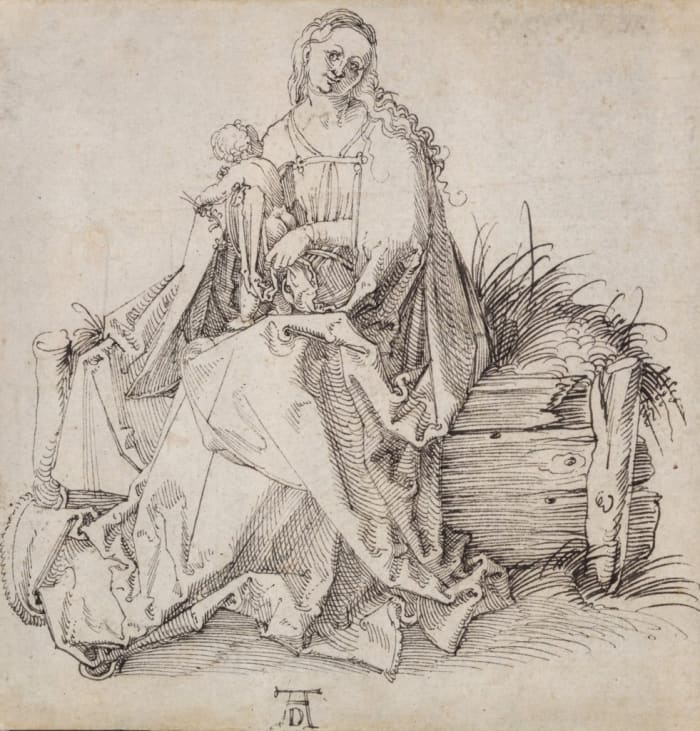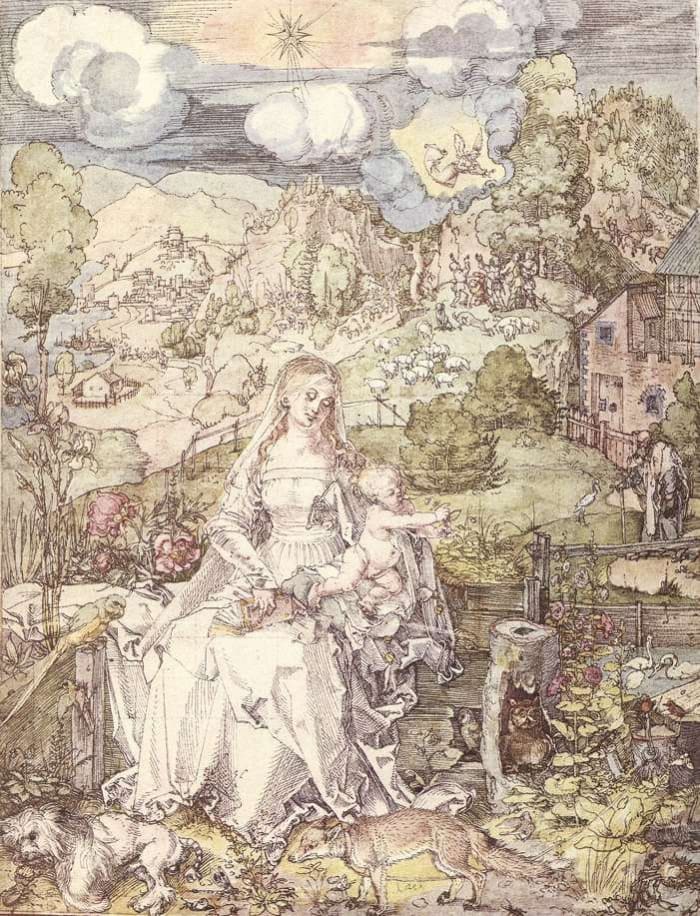A yellowing picture that a Massachusetts man bought at an estate sale for $30 is exciting the art world, as it is believed to be a rare work by renowned German Renaissance artist Albrecht Dürer that could be worth tens of millions.
A panel of experts that gathered earlier this month at the British Museum in London to discuss the work said the drawing, titled “The Virgin and Child With a Flower on a Grassy Bench” and dated to around 1503, could fetch up to $50 million.

“The Virgin and Child with a Flower on a Grassy Bank,” circa 1503, believed to have been created by Albrecht Dürer.
Courtesy of Agnews Gallery
The buyer, who is choosing to remain anonymous, and who earned a modest living buying and selling secondhand goods, had picked up the drawing on a whim at a Concord, Mass., estate sale in 2016, following the passing of architect Jean-Paul Carlihan. According to the Boston Herald, Carlihan inherited the piece from his grandfather who bought it in Paris in 1919. The husband of a family member said he did not remember seeing it hanging in Carlihan’s home, as his survivors believed it to be a nearly worthless reproduction.
Though the sketch bears one of the art world’s most well-known monograms — Albrecht Dürer’s “A.D.”— neither the buyer nor the sellers believed it was a genuine work by the artist. As the man told Artnet News, he simply thought that it was “a wonderfully rendered piece of old art.”
The declaration that the drawing was the work of Dürer — an assessment that is not universally shared among researchers — came about as a result of a chance meeting and the efforts of art dealer and collector Clifford Schorer. Schorer, also a shareholder of Agnews Gallery in London, first heard rumors about the possible Dürer work during a 2019 trip to Boston and got in touch with the owner.
“It was an incredible moment when I saw the Dürer,” Schorer told Art Newspaper, “It was either the greatest forgery I have ever seen — or a masterpiece.”
Experts consulted by Schorer identified two telltale features that pointed to the work’s authenticity: the artist inscribed his monogram with the same ink featured in the drawing. (According to an Agnews’ statement, Dürer signed his initials this way on at least 20 other works completed between 1501 and 1514, asserting authorship in an early version of copyright.); and Jane McAusland, one of the world’s most respected conservators of work on paper who has preserved pieces by artists such as Leonardo da Vinci and William Turner, also found that the work was created on paper bearing a trident and ring watermark — the same motif seen on more than 200 sheets used by the artist.
Leading Dürer scholars Christof Metzger, head curator at the Albertina Museum in Vienna, and Giulia Bartrum, a former curator at the British Museum, examined the work and deemed it authentic, according to the Art Newspaper. They assume that Dürer created the sketch in preparation for The Virgin Among a Multitude of Animals, now housed at the Albertina.

Albrecht Dürer’s “The Virgin Among a Multitude of Animals,” circa 1506.
Public domain via Wikimedia Commons
The 1503 sketch depicts the Virgin Mary and her son Jesus Christ as a toddler. The two sit on a grassy knoll propped up by a rudimentary wooden fence. In contrast with these rustic surroundings, Mary wears a thick, draped cloak whose fine fur trim “spreads … in opulent folds over the grassy ground,” per Agnews’ statement.
Schorer and the drawing’s owner stand to make a significant windfall when the drawing goes on sale, probably sometime in the new year. Agnews, which had the drawing on view earlier this month, has not yet fixed a firm price, although, according to a the gallery, it plans to ask for an “eight-figure sum” for the drawing.
Schorer said it could be the most valuable work by a Renaissance master to hit the market since a chalk sketch by Raphael sold for nearly $48 million at Sotheby’s in 2012.









